Get the Scoop on How Composting Helps Our Environment
Posted on May 29, 2025 by Brianna Anzaldua
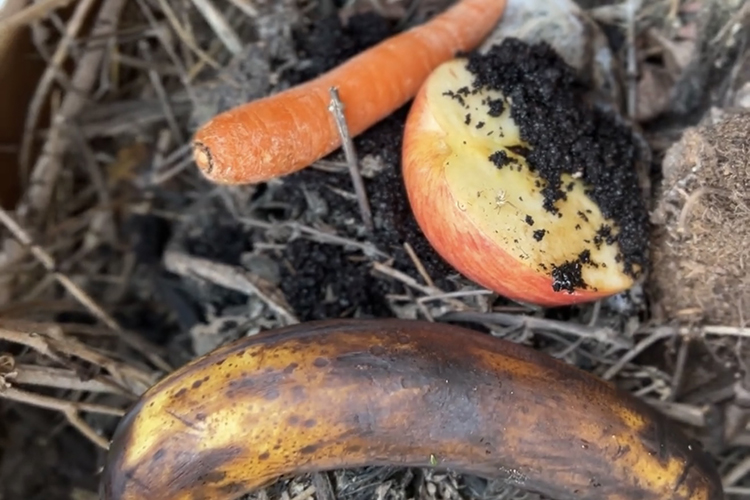
In honor of Learn About Composting Day, the Edwards Aquifer Authority Education Outreach Center is sharing tips to help you start composting at home – and here’s why it matters.
Composting transforms everyday food scraps and yard clippings into nutrient-rich organic matter that boosts soil health, helps Texas native plants thrive, and supports water conservation. Healthy soils hold more moisture and if you combine that with a diverse native plant landscape you can create a winning solution to conserving water!
From Scraps to Soil: How Composting Works
The science behind it is actually pretty cool! Tiny microbes (yep, the good kind!) break down organic materials with the help of oxygen, moisture, and food. When the balance is just right, these little organisms get to work—generating heat, water vapor, and carbon dioxide as they turn waste into compost, a super helpful soil conditioner. You can compost a variety of everyday items, including yard trimmings, fruit and veggie peels, used coffee grounds, and even certified compostable products. It’s an easy way to cut down on waste and give back to the Earth—all while creating healthier soil for plants
and pollinators alike!
How You Can Start Composting at Home
1. Gather Materials
Choose nitrogen-rich and carbon-rich materials like fresh grass clippings, fruit, vegetable scraps, coffee grounds, dry leaves, twigs, and wood chips. Materials like this provide the necessary ingredients for microorganisms to decompose organic matter efficiently. Green offers the energy source (nitrogen), while browns provide structural support and carbon, helping the pile speed up the composting process!
2. Find the Right Place for Your Compost Pile:
Choosing a spot to start your compost is very important. Look for a spot that’s not prone to waterlogging and that receives partial shade— this ensures that your compost maintains ideal temperature and moisture levels for microbial activity. If your compost is placed directly in the sun, it may dry out quickly and will need supplemental watering.
3. Prepare Your Compost Ingredients
Before adding your ingredients to the compost pile, be sure to break and chop them up into smaller pieces. Doing this helps other materials in the pile break down faster!
4. Building Your Compost Pile
When starting your pile, you want to create a four- to six-inch layer of twigs and wood chips. This layer is important for creating air-flow and absorbing liquids. Next, add your green ingredients (fresh grass clippings, vegetable scraps, dry leaves, etc.). Be sure to cover your food scraps with four to eight inches of dry leaves or other browns, this helps to ensure air circulation throughout your compost! Always ensure your compost pile has enough water, it should have the same amount of moisture that a wrung-out sponge would have.
Experience Composting at the EOC
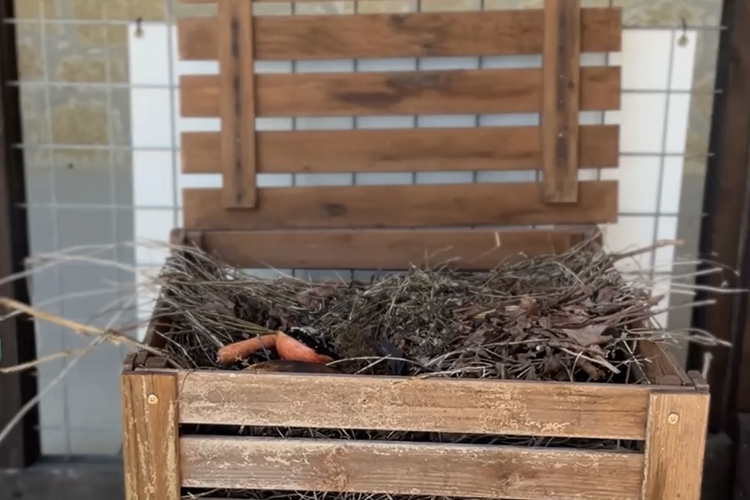
Did you know our Education Outreach Center features a composting station? In addition to exploring the many wonders of science, visitors can get hands-on with composting—
discover how it works, learn how to start your own, and see nutrient-rich finished compost up close! Learn more by booking your free Self Guided Tour on our website.
Here at the EOC, we use a method called “cold composting”—a slower, but much less labor-intensive way to turn organic waste into nutrient-rich compost. Cold composting allows nature to do its thing—no frequent turning or constant moisture needed! We are always encouraging composting here at the EOC, after school field trips we’ll throw our food waste in our compost bin to use in our garden later.
How Composting Benefits Our Environment
In addition, composting helps reduce methane emissions from landfills—a powerful greenhouse gas that contributes to climate change. By turning organic waste into compost, we’re closing the loop in our food system and promoting a more sustainable way of living. It’s a simple habit that can have a big impact, and it all starts with what we choose to throw away.
What NOT to Use in Composting
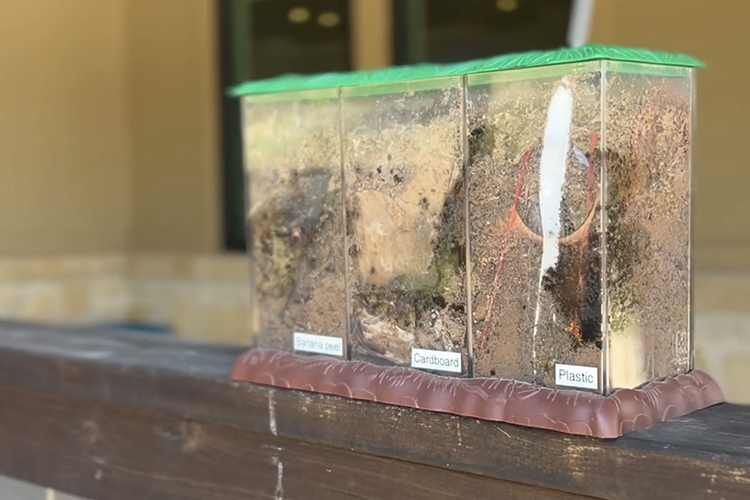
When you visit the EAA EOC, you can see our up-close demonstration of the effects of a banana peel, cardboard, and plastic in a compost pile. As you can see, the banana peel and cardboard are easier to break down than plastic!
Celebrate Learn About Composting Day with us at the Edwards Aquifer Authority Education Outreach Center! Stop by to explore our free exhibits and discover how composting plays a role in protecting our environment and our aquifer. It’s a fun and educational way to dig into sustainability!
The EOC, located on the Edwards Aquifer Recharge Zone at 23400 Cibolo Vista, San Antonio, TX 78261. Check our homepage for the latest operating hours. This unique location offers visitors the opportunity to explore and learn directly on the recharge zone of the aquifer. This makes it a convenient and accessible destination for free educational field trips in San Antonio. It is ADA-accessible, free, and open to the public, making it the perfect destination for families, school groups, and individuals alike. With its mission to manage, enhance, and protect the Edwards Aquifer, the EAA is dedicated to educating the community about this precious resource. Through interactive exhibits, engaging school programs, and customizable tours, the EAAEOC makes learning accessible and fun.
Whether you’re looking for an educational field trip, a self-guided adventure, or a unique way to learn about Texas’ natural resources, the EAAEOC has you covered. Visit eaaeoc.org to schedule your free educational trip to the Edwards Aquifer Authority Education Outreach Center today and make 2025 a year of discovery and learning!
2 Comments
Submit a Comment
More Posts
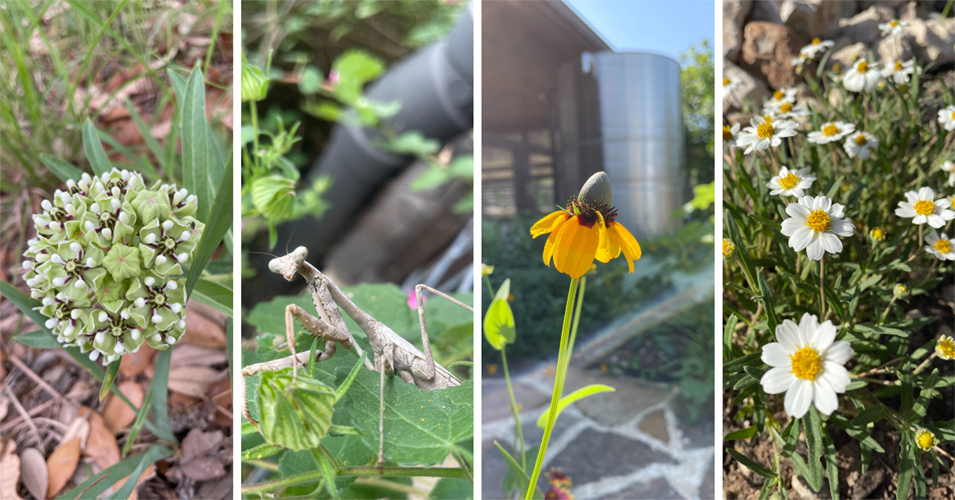
From Lens to Landscape: Tips for Our Rooted in Saving Water Photo Contest
June marks the official start of summer – and one of the most fascinating astronomical events of the year: the summer solstice. This annual milestone happens when Earth’s tilt is at its maximum toward the sun, giving the Northern Hemisphere its longest day and shortest night of the year. This year, the summer solstice arrives on June 20th at 3:50 p.m. CDT.
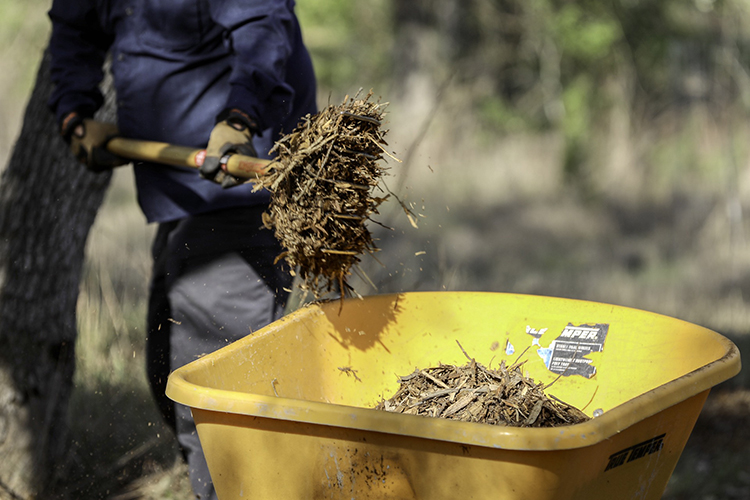
Dig Into World Soil Day at the EAA Education Outreach Center
At the Edwards Aquifer Authority Education Outreach Center (EAA EOC), we’re all about celebrating the nature beneath our feet, and that includes more than just the Edwards Aquifer. We’re talking about soil! This World Soil Day is the perfect time to get down and dirty...

This is such a lovely and inspiring message. Keep up the great work!
Really appreciate the effort behind this.